Roth IRA vs a Taxable Brokerage Account: Investing in Different Ways
July 21, 2025
When considering your financial strategy, understanding how different investment accounts work can be essential. Think of it like using tools in a toolbox—each serves a purpose, depending on the task at hand. Two commonly used accounts for building wealth are the Roth IRA and the taxable brokerage account. Each has unique characteristics, including differences in tax treatment and how they may align with specific financial goals. A clear understanding of these options can help you make informed decisions.
The Roth IRA: A Tax-Advantaged Tool for Retirement
The Roth IRA (Individual Retirement Account) is a powerful tool specifically designed for long-term retirement savings. Its defining characteristic lies in its unique tax treatment: contributions are made with after-tax dollars. This means you don't receive an upfront tax deduction in the year you contribute.
However, the immense benefit comes later: once you reach age 59½ and have held the account for at least five years, all qualified withdrawals—including both your original contributions and any accumulated earnings—are completely tax-free. This makes the Roth IRA an incredibly attractive option for those who anticipate being in a higher tax bracket in retirement than they are today.
Within a Roth IRA, you have the flexibility to invest in a diverse range of assets, including individual stocks, bonds, mutual funds, exchange-traded funds (ETFs), and other securities. This broad selection allows you to tailor your investment strategy to your risk tolerance and financial objectives.
Furthermore, a significant advantage of the Roth IRA is the ability to withdraw your original contributions at any time, for any reason, without incurring taxes or penalties. This feature provides a degree of liquidity that can be beneficial in unforeseen circumstances, though ideally, these funds remain untouched for retirement.
Key Characteristics of a Roth IRA:
● After-Tax Contributions: You contribute money on which you've already paid income tax.
● Tax-Free Qualified Withdrawals: Both contributions and earnings are tax-free in retirement, provided certain conditions are met (age 59½ and a 5-year holding period).
● Contribution Flexibility: You can withdraw your original contributions at any time without tax or penalty.
● Broad Investment Options: Access to a wide array of securities.
● No Required Minimum Distributions (RMDs): Unlike many other retirement accounts, you are not forced to take distributions at a certain age, allowing your money to grow indefinitely or be passed on to heirs.
● Income Limitations: Eligibility for direct contributions is subject to Modified Adjusted Gross Income (MAGI) limits.
Tax implications can vary based on your individual tax situation. Please consult a qualified tax advisor before making decisions.
The Taxable Brokerage Account: Versatility for Diverse Goals
In contrast, a taxable brokerage account is a highly versatile investment vehicle that isn't solely confined to retirement planning. While it can certainly be used to save for your golden years, its lack of withdrawal restrictions and contribution limits makes it suitable for a much broader spectrum of financial objectives. These can include shorter-term goals such as accumulating a down payment for a house, building an emergency fund, generating passive income through dividends, or even funding a dream vacation.
A brokerage account also offers an extensive universe of investment choices, often even wider than some retirement accounts. You can invest in virtually any publicly traded security available through your chosen financial institution.
However, the key distinction lies in its tax treatment. Unlike a Roth IRA, the earnings within a taxable brokerage account are subject to taxation in the year they are realized. This means that capital gains (profits from selling investments), dividends, and interest income are typically taxed annually, even if you choose to reinvest those earnings back into the account.
Key Characteristics of a Taxable Brokerage Account:
● No Contribution Limits: You can deposit as much money as you wish into the account.
● Versatile Goals: Suitable for both short-term and long-term financial objectives.
● Taxable Earnings: Investment gains (capital gains, dividends, interest) are generally taxed in the year they are earned or realized.
● Broad Investment Options: Access to a vast array of publicly traded securities.
● No Early Withdrawal Penalties: Funds can be withdrawn at any time without age-related penalties, though capital gains taxes will apply.
● No Income Restrictions: Anyone can open and contribute to a taxable brokerage account, regardless of income level.
● No Required Minimum Distributions (RMDs): Similar to a Roth IRA, there are no mandatory withdrawals at a certain age.
Shared Foundations: Where They Overlap
Despite their fundamental differences, Roth IRAs and taxable brokerage accounts share several important similarities:
● Power of Compounding: Both account types harness the incredible power of compounding. This phenomenon, where your investment earnings generate their own returns, allows your money to grow exponentially over time. The longer your money remains invested, the more significant the impact of compounding.
● Flexible Investment Selection: As individual accounts, both offer a wide array of investment choices. Unlike many workplace retirement plans (like a 401(k)) which may have a more limited menu, Roth IRAs and brokerage accounts typically allow you to select from a broad universe of stocks, bonds, mutual funds, ETFs, and certificates of deposit (CDs) available through your financial institution.
● No Upfront Tax Deduction: Neither a Roth IRA nor a standard taxable brokerage account provides an immediate tax deduction for contributions. If an upfront tax break is a priority, a traditional IRA, which allows for tax-deductible contributions (subject to income and workplace plan eligibility), might be a more suitable option.
● Inherent Investment Risk: It's crucial to remember that all investing carries inherent risk, including the potential loss of principal. While historical market performance suggests long-term growth, past results are not indicative of future returns. Market downturns and short-term losses are a normal part of the investing landscape.
● No Required Minimum Distributions (RMDs): A significant advantage for both account types is the absence of RMDs. Unlike traditional IRAs and 401(k)s, you are not mandated to begin withdrawing funds at a specific age. This flexibility allows your investments to continue growing tax-free (in a Roth IRA) or remain invested (in a brokerage account) for as long as you wish, potentially forming a substantial legacy for heirs.
Diving Deeper: The Distinctive Differences
While the similarities provide a common ground, the differences truly define the strategic use of each account:
● Tax Treatment of Earnings: This is perhaps the most critical distinction. In a Roth IRA, investment earnings (capital gains, dividends, interest) grow tax-free within the account. You don't pay taxes on them annually. In contrast, with a taxable brokerage account, any realized capital gains, dividends, or interest income are generally taxed annually by the IRS, even if you reinvest them. This can lead to a phenomenon known as "tax drag," where a portion of your returns is siphoned off each year.
● Tax Treatment of Withdrawals: Qualified withdrawals from a Roth IRA (after age 59½ and meeting the 5-year rule) are entirely tax-free, including both contributions and earnings. Withdrawals from a taxable brokerage account are generally not taxed on the principal, but any gains realized upon sale are subject to capital gains tax in the year they are sold.
● Annual Contribution Limits: Taxable brokerage accounts have no annual contribution limits. You can deposit an unlimited amount of money. Roth IRAs, however, are subject to annual limits, set at $7,000 for 2025, with an additional $1,000 catch-up contribution for those age 50 and over. This difference significantly impacts how much you can allocate to each account in a given year.
● Early Withdrawal Penalties: Withdrawing earnings from a Roth IRA before age 59½ or before the 5-year rule is met typically incurs income taxes and a 10% early withdrawal penalty. While exceptions exist (e.g., first-time homebuyer expenses up to $10,000, qualified education expenses, disability), these restrictions don't apply to taxable brokerage accounts. You can withdraw funds from a brokerage account at any time, for any reason, without an early withdrawal penalty, though you will owe taxes on any realized gains.
● Income Eligibility: Roth IRAs have Modified Adjusted Gross Income (MAGI) limits that can restrict or eliminate direct contributions for higher earners. For 2025, full contributions are allowed for single filers with MAGI under $150,000 and married filing jointly under $236,000. Taxable brokerage accounts have no income restrictions, making them accessible to anyone regardless of their earnings.
● Advanced Trading Strategies: Taxable brokerage accounts typically offer more flexibility for advanced trading strategies, such as margin trading (borrowing money to invest), short selling (profiting from declining stock prices), and complex options trading. While some limited margin trading may be available in Roth IRAs under specific conditions, these advanced strategies are far more common and unrestricted in taxable accounts.
As always, please consult a qualified tax advisor before making any decisions. Tax implications vary based on your individual situation.
Deciding Your Path: Roth IRA or Brokerage Account?
The optimal choice between a Roth IRA and a taxable brokerage account hinges on your individual financial goals and circumstances.
● Choose a Roth IRA if:
● Your primary goal is retirement savings, especially if you believe you'll be in a higher tax bracket in retirement.
● You are eligible to contribute based on your income limits (or are considering a backdoor Roth IRA strategy).
● You value the prospect of tax-free withdrawals in retirement and the flexibility to withdraw contributions without penalty.
● Choose a Taxable Brokerage Account if:
● You are saving for shorter-term financial goals (e.g., a down payment on a house, a large purchase, early retirement before age 59½).
● You have exceeded the contribution limits for your Roth IRA (or are ineligible due to income).
● You wish to utilize advanced trading strategies.
● You simply want a highly liquid investment vehicle with no restrictions on contributions or withdrawals.
The excellent news is that you don't have to pick just one. For many individuals, the most effective strategy involves utilizing both. A common and highly recommended approach is to maximize your annual contributions to your Roth IRA first, taking full advantage of its unparalleled tax-free growth and withdrawal benefits for retirement.
Once you've reached that limit, you can then direct additional savings into a taxable brokerage account to pursue other financial goals or simply accumulate more wealth beyond the confines of retirement accounts.
By knowing the benefits and drawbacks of Roth IRAs and taxable brokerage accounts, you can make smart choices. This helps your money work harder for you and potentially build the future you want.
Sources:
https://www.fidelity.com/learning-center/smart-money/roth-ira-vs-brokerage-account
Disclosure:
This information is an overview and should not be considered as specific guidance or recommendations for any individual or business.
This material is provided as a courtesy and for educational purposes only.
These are the views of the author, not the named Representative or Advisory Services Network, LLC, and should not be construed as investment advice. Neither the named Representative nor Advisory Services Network, LLC gives tax or legal advice. All information is believed to be from reliable sources; however, we make no representation as to its completeness or accuracy. Please consult your Financial Advisor for further information.

